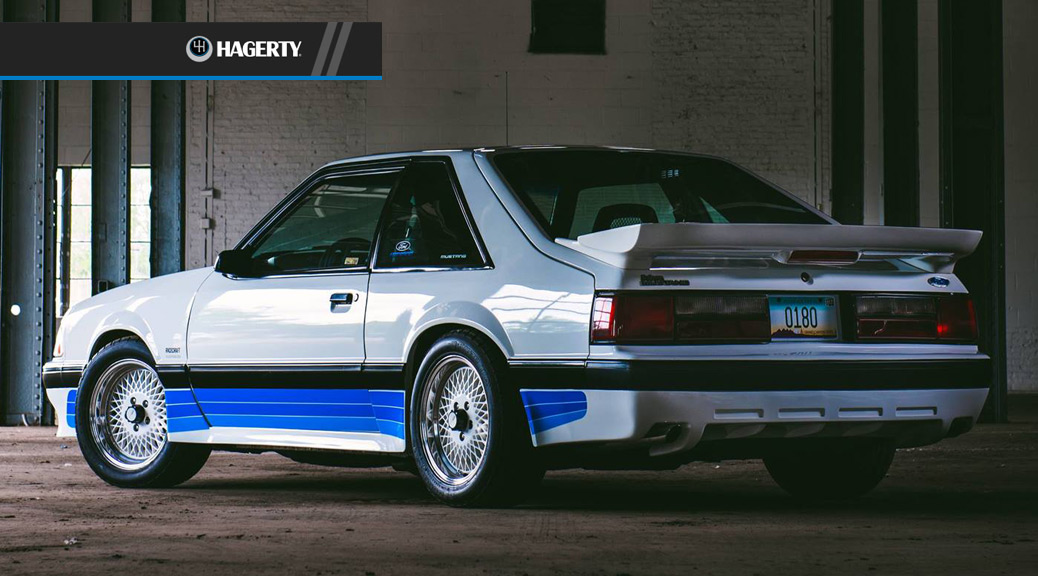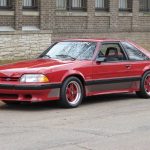Saleen Mustangs still command a premium price
By: ANDREW NEWTON on November 6, 2019
Original Article: HAGERTY.COM
Values have risen 27–34 percent in 2 years.
Conventional wisdom would have you believe that modifying your car will wreck its value. Fair enough. Doing your own “improvements” out back with a hacksaw and a hammer certainly won’t do your car any favors when it comes time to sell, and buyers are often wary of even professionally tuned cars.
However, it’s not true that deviations from factory stock always make a car less valuable in the long run. Just look at what people are paying for RUF Porsches, early AMG Mercedes-Benzes, and Alpina BMWs these days. What sets those cars apart from the average modified car with bolt-ons and custom wheels is that the RUFs, AMGs, and Alpinas are series-built by well-known, small-volume manufacturers, often with the knowledge of the carmakers, which is a far cry from your local shop.
Another, closer-to-home example is Saleen. With the contract to build the 2005–06 Ford GT, not to mention its own S7 supercar, Saleen has done some big things, but it is best known for building souped-up Mustangs since the mid-1980s. Even the early Saleen Mustangs were carefully and professionally built, and you could buy them through your Ford dealer. They even came with a Ford factory warranty. Saleen also built its Mustangs with racing in mind and in small numbers (especially by Mustang standards), so it’s no big stretch of the imagination to think of Saleens as the Shelbys of the ’80s. Saleens are already significantly more than regular Fox-body Mustangs, and their values have been growing at a faster clip, but check how much a ’60s GT350 is worth and it looks like the Saleens have plenty of room to grow. There’s a reason why we put them on our Bull Market list earlier this year.
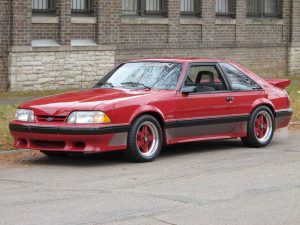
Steve Saleen started Saleen Autosport in 1983, and he built a handful of cars in 1984. Because of emissions regulations, he left the Mustang’s 5.0 engine alone, but the addition of stiffer springs, Bilstein dampers, alloy wheels, and stickier tires were more than enough to turn the lumbering Fox-body Mustang into an entirely different car—a stiff, unapologetic, track-ready corner-carver. Nifty custom FloFit seats, a 170-mph speedo, and Escort radar detector rounded out the interior, while a body kit and bright graphics let everyone know you were driving something special.
Things only got better for Saleen. The company quickly reached an agreement with Ford to put Saleen Mustangs inside Ford dealerships, where they retailed for more than a standard 5.0 GT but less than Ford’s turbocharged Mustang SVO. Saleens also had great success in SCCA racing, including three consecutive wins at the 24 Hours of Mosport from 1986–88, and the company started building modified Ranger pickups in 1987.
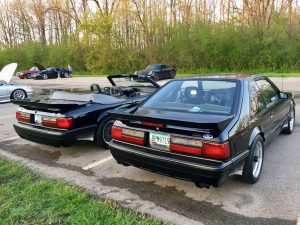
Steve Saleen was finally able to combine his already effective handling improvements to the Mustang with a more potent engine in 1989 with the Saleen SSC. A larger throttle body, improved intake, new exhaust with high-flow cats, and other improvements brought power from 225 hp in the base car to 290 hp and 325 hp, crazy figures for the ’80s. A heavy-duty battery and clutch, along with larger wheels, were other upgrades. Saleen improved on the SSC further in 1990 with the SC, which makes 304 hp and features better handling and a more aerodynamic body. A Vortech supercharger arrived for ’93, but both SSC and SC were very expensive when new. Saleen sold just 161 SSCs, followed by 28 SCs. Even the normal 225-hp Saleen Mustangs are rare. Production totaled just a few dozen in some years, while even the peak years of 1988–89 produced only a little more than 700 cars annually. Meanwhile, Ford sold over 400,000 Mustangs in those two years. Hard driving, theft, and accidents have taken plenty of Saleens off the road.
After 1993, Saleen went on to build Mustangs based on the fourth-generation cars, but it’s the 1984–93 versions, with their wild body kits, that are arguably the best known. When it comes to how much these standout Mustangs are worth, it’s actually not a Saleen but Dearborn’s own ‘roided-out track-ready Fox-body—the SVT Cobra R—that carries the highest value among Fox-bodies, with a condition #2 (excellent) value of $57,450. The slightly rarer Saleen SSC and the much rarer Saleen SC are a bit behind, with #2 values of $41,450 and $47,700, respectively, while a normal production Saleen Mustang comes in at an average of $24,150. More run-of-the mill sporty Fox-bodies are worth way less. A 5.0 GT is, on average, 45-percent cheaper than a Saleen ($13,300), and a 5.0 LX is 64-percent cheaper ($8650).
While it isn’t a surprise that Saleens are pricier than base cars, they are also appreciating faster than their factory cousins. Across all 1979–93 Mustangs, values are up an average of 16.5 percent over the past two years, and Fox-bodies of all types have been among the hotter cars in the market over that time; Saleens are up anywhere from 27–34 percent over the same period.
Other than the aforementioned 1993 SVT Cobra R, of which 107 were built, no Fox-body Mustang has appreciated faster over the last few years than Saleens have. Like Shelby, the Saleen name commanded a premium price from the beginning, but that premium is getting bigger.
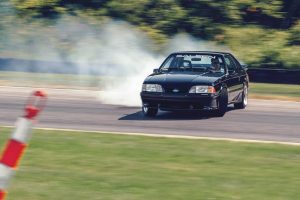
Our Marketplace Editor Colin Comer owns several Saleens and watches the market for them closely. “The production numbers are really low, in many cases much less than the 1965–70 Shelbys, and finding a really good one that hasn’t been crashed or modified or beat to death and still has original parts is already really tough,” according to Comer. “I absolutely think these Saleens will be the early Shelbys for another generation.”
He also notes that the earliest cars are particularly sought after and especially the first dozen-or-so cars, which featured some unique parts. Speaking of parts, “due to the realities of being a small manufacturer that used other people’s parts, a lot of things are tough to get,” Comer adds. “Original radios, wheels, body kit parts, shift knobs, etc. are prized, and for the 1987-and-up cars with Flofit the seat fabric is long unavailable so that’s a biggie.”
Finding a good one is, therefore, worth the wait. And given the bright future these fine-tuned Fox-bodies have on the collector market, it wouldn’t be a bad idea to hang on to your Saleen for the long haul, too.
[Source: Hagerty]

